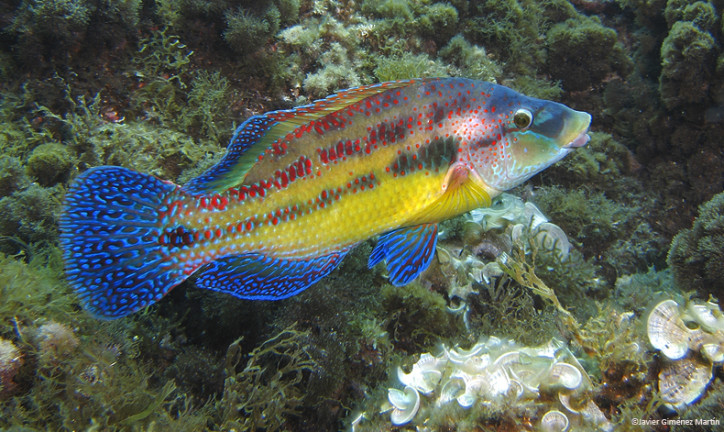Fish of the Symphodus genus of the Labridae (wrasses) family of the Labroidei suborder of the Perciformes order of the Acanthopterygii superorder.

(East Atlantic peacock wrasse male. Photo by © Giménez Martín. fotodenaturaleza.com)
East Atlantic peacock wrasse (Symphodus tinca) was first described in 1758 by the Swedish naturalist Carl Linnaeus (1707-1778).
It inhabits the depth of 1-50 meters. It prefers to swim close to a rocky bottom in sea grass thickets. It often enters bays and lagoons. Males are brighter than females. The maximum recorded length is 44 cm; specimens up to 25 cm long are more common. It feeds mainly on sea urchins, mollusks, shrimps, and crabs.

(East Atlantic peacock wrasse female. Photo © ffessmbiologie.free.fr)
It is a permanent inhabitant of the Adriatic Sea.
Names of East Atlantic peacock wrasse (Symphodus tinca) in other languages as follows:
Buzoçi (Albanian), Зеленушка (Zelenushka) (Bulgarian), Ταωλαπίνα (Taoljapina) (Greek), Sifton tawwasi (Hebrew), Peto (Spanish), Tordo pavone (Italian), Pfauen-Lippfisch (German), Wargacz tynka (Polish), Bodião-pavão (Portuguese), Зеленушка (Zelenushka) (Russian), Lumbrak (Serbian, Croatian), Lekeliçırçır balığı (Turkish), Crènilabre paon (French).